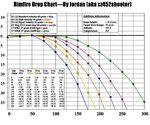Chief2387
Airman
I'm a student at Thaddeus Stevens College of Technology as an Architect.
For my final Project we need to design a building from a list of concept buildings.
I choose a Gun/Archery Range.
My Concept is a Shooting Sports location where one can learn about either sport and acquire training in one or both fields.
also the location will be built with target competition in mind.
I'm still debating between indoor and outdoor ranges in my design, though I am leaning towards an indoor range..
I've acquired quite a bit of information from the Department Of Defense and the Department of Energy.
However, I was wondering if anyone on the sight has experience with working on a gun range or archery range.
Military, Civilian, Trainer, etc.
I do plan on visiting Gun some local ranges for walk-throughs, so as to get a visual idea of where I'm going.
Right now it's still in the concept phase. I'm acquiring as much information as much information as I can.
I don't even have an idea on size.
It will be two story.
First floor be primarily retail with an information desk for those new to the location.
Second Floor will be leaning towards education with class rooms.
The left side of the building will be for archery.
the right side for Firearms.
Any form of bow or crossbow will be compatible with the sight.
Compatible firearms will include for indoor pistols, shotgun(Slug rounds), PDW's.
There will be a outside range for rifles.
This is subject to change.
That's my idea. Any idea's are welcome.
Nothing Political though. This is a fictional building which will most likely never be built anyway.
Thank you for your input in advance.
For my final Project we need to design a building from a list of concept buildings.
I choose a Gun/Archery Range.
My Concept is a Shooting Sports location where one can learn about either sport and acquire training in one or both fields.
also the location will be built with target competition in mind.
I'm still debating between indoor and outdoor ranges in my design, though I am leaning towards an indoor range..
I've acquired quite a bit of information from the Department Of Defense and the Department of Energy.
However, I was wondering if anyone on the sight has experience with working on a gun range or archery range.
Military, Civilian, Trainer, etc.
I do plan on visiting Gun some local ranges for walk-throughs, so as to get a visual idea of where I'm going.
Right now it's still in the concept phase. I'm acquiring as much information as much information as I can.
I don't even have an idea on size.
It will be two story.
First floor be primarily retail with an information desk for those new to the location.
Second Floor will be leaning towards education with class rooms.
The left side of the building will be for archery.
the right side for Firearms.
Any form of bow or crossbow will be compatible with the sight.
Compatible firearms will include for indoor pistols, shotgun(Slug rounds), PDW's.
There will be a outside range for rifles.
This is subject to change.
That's my idea. Any idea's are welcome.
Nothing Political though. This is a fictional building which will most likely never be built anyway.
Thank you for your input in advance.
Last edited:

